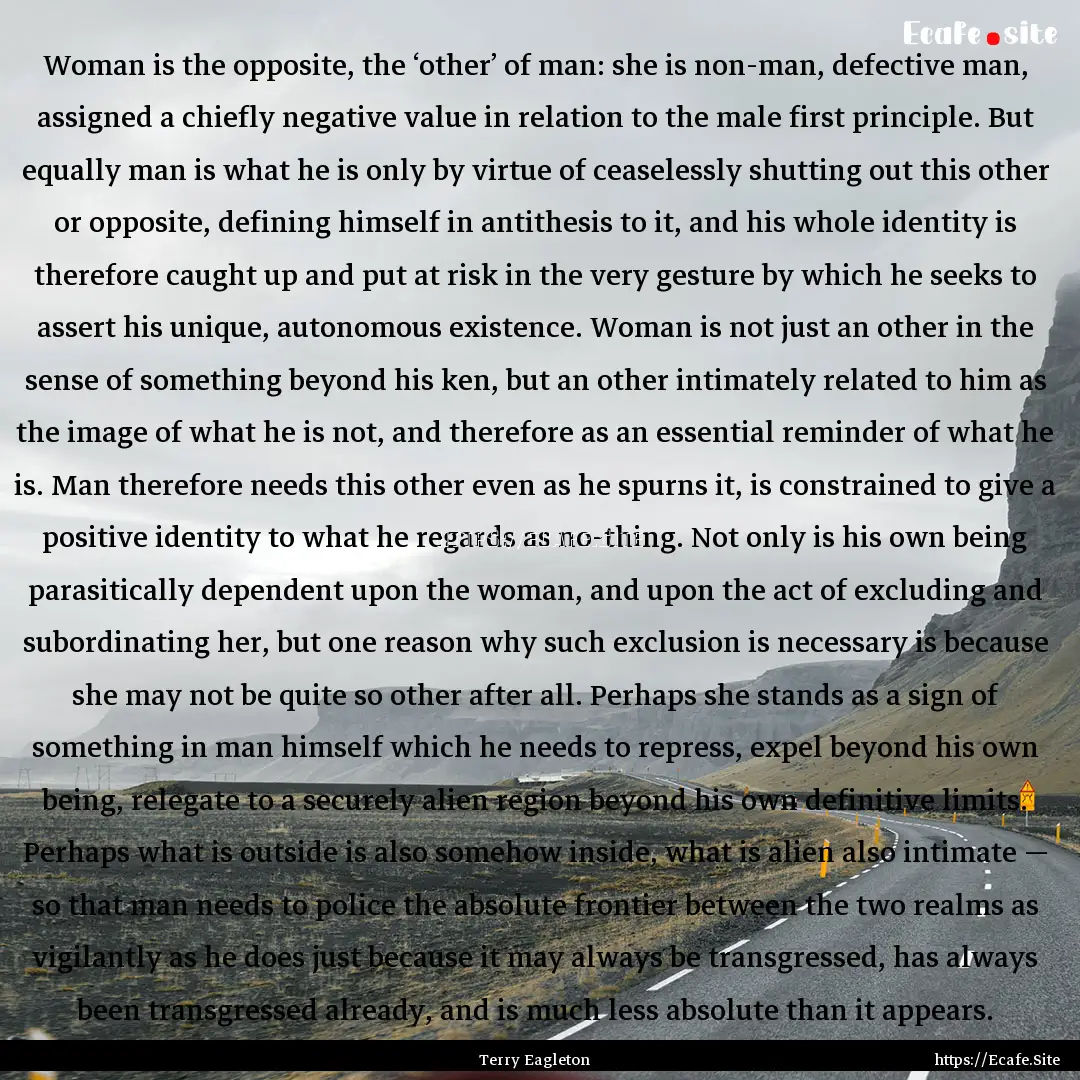
Report, if you have a problem with this page“ Woman is the opposite, the ‘other’ of man: she is non-man, defective man, assigned a chiefly negative value in relation to the male first principle. But equally man is what he is only by virtue of ceaselessly shutting out this other or opposite, defining himself in antithesis to it, and his whole identity is therefore caught up and put at risk in the very gesture by which he seeks to assert his unique, autonomous existence. Woman is not just an other in the sense of something beyond his ken, but an other intimately related to him as the image of what he is not, and therefore as an essential reminder of what he is. Man therefore needs this other even as he spurns it, is constrained to give a positive identity to what he regards as no-thing. Not only is his own being parasitically dependent upon the woman, and upon the act of excluding and subordinating her, but one reason why such exclusion is necessary is because she may not be quite so other after all. Perhaps she stands as a sign of something in man himself which he needs to repress, expel beyond his own being, relegate to a securely alien region beyond his own definitive limits. Perhaps what is outside is also somehow inside, what is alien also intimate — so that man needs to police the absolute frontier between the two realms as vigilantly as he does just because it may always be transgressed, has always been transgressed already, and is much less absolute than it appears. ”

Terry Eagleton
From : Literary Theory: An Introduction



